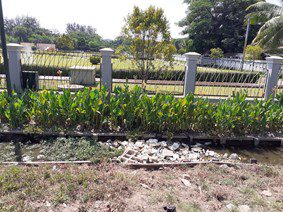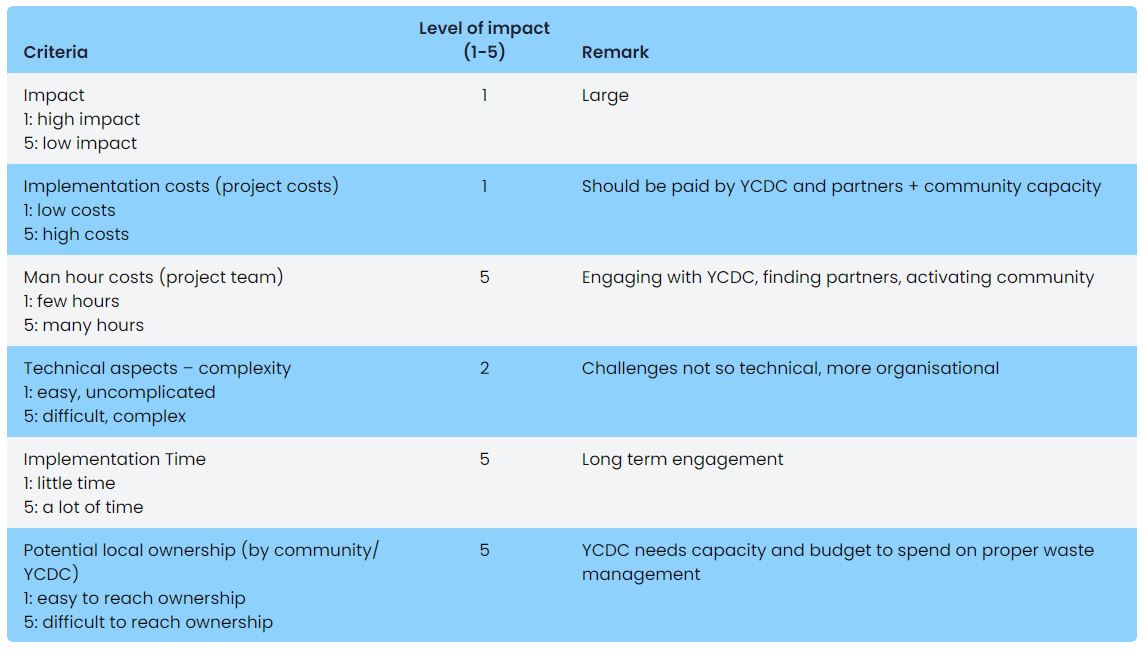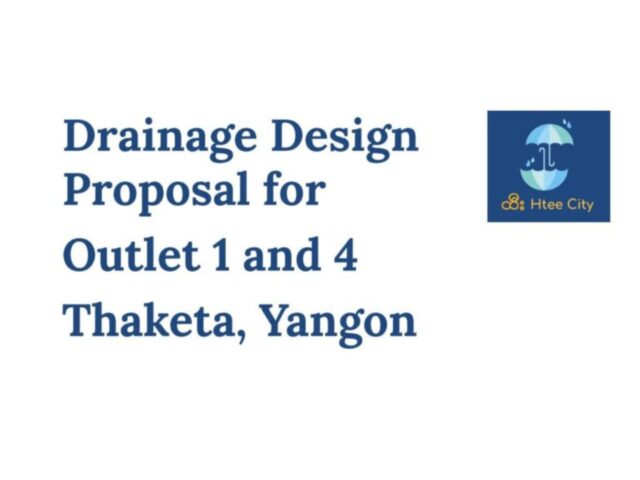Introduction & Basic Information
Waste management is a vital part of a healthy living environment, both during the rainy season as well as in the dry season. Especially waste ending up in the drainage system has two main negative impacts:
- blocking the water flow, increasing the risk of flooding
- contaminating the water, increasing the risk of diseases
The rapid economic growth with urbanisation and industrialisation in Myanmar has led to significant challenges with the management of waste. Daily waste generation, especially in three of the largest cities in the country (Yangon,Mandalay and Nay Pyi Taw), have increased dramatically, which in turn is leading to a number of public health and environmental pollution. Typically, one to two-thirds of generated waste in many townships is not properly collected, and uncollected waste is often dumped on open land, and in the streets and waterbodies causing pollution to both surface and groundwater. In addition, the volume of industrial and other hazardous waste is also growing rapidly in Myanmar emphasising the importance of an integrated approach to manage all waste.
Waste management in Yangon is a responsibility of the government, namely the waste department of Yangon City Development Committee (YCDC). The tasks of YCDC consist of collecting waste along the main roads of the city, providing the necessary infrastructure and assets (mainly bins) and processing the waste. There is also an extensive informal waste collection system, with waste pickers etc. Finally, the residents themselves have an important role to play as well. In this WIKI we’ll explain more about that.
Within our project, we discussed and worked on the following interventions to improve waste management:
- add a recycling station
- add a compost station
- improve waste management by the community
- organizing a cleaning campaign/event
- collecting solid waste within drainage system (e.g. through a socket or a grid)
- improve waste management by YCDC
This WIKI will be about the last one: improve waste management by YCDC.
What is Waste Management?
Waste management (or waste disposal) includes the activities and actions required to manage waste from its inception to its final disposal. This includes the collection, transport, treatment and disposal of waste, together with monitoring and regulation of the waste management process and waste-related laws, technologies, and economic mechanisms.
There are different types of waste:
- Municipal Solid Waste (MSW)
- Industrial Waste
- Medical Waste
- Emerging and Other Special Waste
- Wastewater
Each type has different methods of disposal and management. Waste management deals with all types of waste, including industrial, biological and household. In some cases, waste can pose a threat to human health.
Related with our project, drainage maintenance and repair to build on from the community work to back drains already carried out, particularly focusing on connections to ensure the system is effective. For this focus point, we would like YCDC to provide labour and materials, and we would develop the scope of work together.
Stakeholder engagement
To improve waste management by YCDC we worked on understanding the current challenges and discussed possible ways to improve this with YDCD.
We worked with the drainage department of YCDC, both on city level, as on township level. During some discussions the ward office committee was also joining, to discuss with YCDC about the main issues in his area.
Data collection & analysis
1) Outlet 1
Figure : The existing situation of drain and outlet-1 in Dawbon Township
2) Drain Outlet 1
Figure : The existing situation of drain and outlet-1 near fortune plaza
3) Culvert Fortune Plaza

4) Culvert and ‘entrance’ Fortune Plaza
5) Drain Fortune Plaza < Ward 5>
6) Culvert Myin Taw Thar Road/ Ward 5
7) Drain along Myin Taw Thar road

The main challenge is in fact that YCDC does not have enough capacity and budget to keep the drains clean and well-maintained. However, the amount of waste can be decreased in other ways as well:
- decrease the amount of waste that ends up in the drainage system, e.g. through a barrier along the road to prevent the waste from falling into the drains.
- decrease the amount of waste by better waste collection, e.g. more bins, and increasing the awareness by the residents and other users of the area
- when the waste is already in the drains, it can be collected at some key locations, so it can be easily collected (e.g. a waste collector, waste sock)
MCA

| Criteria | Level of impact (1-5) | Remark |
|---|---|---|
| Impact 1: high impact 5: low impact | 1 | Large |
| Implementation costs (project costs) 1: low costs 5: high costs | 1 | Should be paid by YCDC and partners + community capacity |
| Man hour costs (project team) 1: few hours 5: many hours | 5 | Engaging with YCDC, finding partners, activating community |
| Technical aspects – complexity 1: easy, uncomplicated 5: difficult, complex | 2 | Challenges not so technical, more organisational |
| Implementation Time 1: little time 5: a lot of time | 5 | Long term engagement |
| Potential local ownership (by community/ YCDC) 1: easy to reach ownership 5: difficult to reach ownership | 5 | YCDC needs capacity and budget to spend on proper waste management |
Content & Technical Design
As part of the Thaketa Climate Resilient project, one goal is to improve the current drainage system as a preparation for implementation of intervention. Aside from technical aspects (improving the drainage system, see here), the rubble and solid waste block the water flow in the drains reducing the capacity of drains. The following actions can improve this:
- Clean all present waste/vegetation and sedimentation.
- Prevent waste from the street to fall inside the channel by installing a “foot barrier’
- Placing a barrier to collect waste upstream of every underground passing/tunnel. This visualizes the problem and makes future interventions easier. This can be done with steel/wooden vertical bars hammered into the ground and connected to the tunnel + a mesh, for example “Chicken wire”.
We discussed these interventions with YCDC. In this document the final proposal to YCDC can be found. Below some more technical details are given on one solution: the waste grid
Add a waste Grid
In the process of plans of cleaning the waste from the drain in the Thaketa Ward-5 , the waste grid is proposed to use a construction of PVC pipes to improvise a grid. It can be used as a mesh if the channel is too wide. Remark is not to make the mesh too small, for example 20x20cm. Cleaning the grid at least 1/day is an important part of the system design, otherwise the drain channel will block.
Figure: A View of waste grid and the design
The waste grid should be installed before an inlet of an underground passage and before entering the main collectors.









